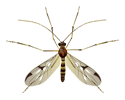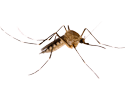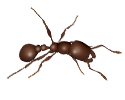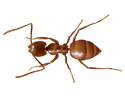Top 2 Carpenter Bee Prevention Tips
Many people have heard of bumble bees and honey bees, but have you heard of carpenter bees? These bees behave a little differently than the typical bees you see in your garden; as their name suggests, they will bore into wood. Carpenter bees in Texas can actually pose a problem for the structure of your home, but maybe not for the reason you would expect. The Houston pest control professionals at Holder’s would like to offer you some helpful information in regards to carpenter bees and what you can do to prevent inviting them to your South Texas home.
Carpenter bees (also called ‘woodcutters’) are large, ranging between ½ an inch and 1 ½ inches long. They look like bumble bees but lack the hairiness of bumble bees; the females are black and shiny and the males are orange, black and shiny. These bees tend to be solitary, which means they don’t live in a typical hive or nest. They will, however, bore holes into the wood of your home to create a safe place to lay their eggs. The female does the burrowing while the male waits outside of the nest, acting aggressive to protect the female and her eggs. While carpenter bees will feed on nectar and pollen and are considered important pollinators, the holes they bore into your home can become a problem. The initial nest that carpenter bees build into your home isn’t usually very substantial; their nest is shaped like a T inside the wood and damage isn’t usually extensive. The problem becomes when the bees return to the same nest, year after year, adding to the damage, or when wood peckers or other insect feeding birds break into the structure to feed on carpenter bee larvae.
How can you protect your home from stinging insects like carpenter bees? Here are the top 2 tips from the Texas pest control professionals at Holder’s Pest Solutions:
- Fill any holes in the wood in the exterior of your home. These holes will attract carpenter bees. Use wood filler or another compound to make sure these holes are totally filled and protected from the elements and from invading carpenter bees.
- Don’t allow the wood in your home to become water damaged. Water damaged wood attracts carpenter bees, so protect wood from water damage by finishing it with varnish or paint. Make sure that wood is protected every year; sanding and repainting can help you recognize any areas of water damaged wood as well as any current carpenter bee infestations you’ve not previously noticed. Varnish or paint can also provide a barrier on the surface of the wood that will protect it from burrowing carpenter bees. Also make sure that any ends of wood beams that are exposed are covered with fine hardwire mesh or plastic caps to protect it from carpenter bees.
Following these tips should help to prevent carpenter bees from nesting inside the wood beams of your home, but they don’t always work. If you have seen carpenter bees buzzing around the structure of your home or business, contact the professionals at Holder’s Pest Solutions today. Serving the Greater Houston area, our trained technicians can help identify carpenter bee nests inside your structure and we have the tools to get rid of the problem completely, even any carpenter bee larvae that may be present inside the timber.
Don’t let a carpenter bee problem get out of hand; protect your home from the possibility of expensive repairs by contacting a professional at the very first sign of a carpenter bee problem. Give the pros at Holder’s a call today to schedule your first inspection to keep your home safe from carpenter bees as well as many other nuisance and damaging pests in South Texas.
Top 2 Carpenter Bee Prevention Tips Serving
Houston
Beaumont | Conroe | Spring | Pasadena | The Woodlands | Richmond | Galveston
Baytown | Bryan | Cleveland | College Station | Cypress | Pearland | Sugar Land
Home » Top 2 Carpenter Bee Prevention Tips






